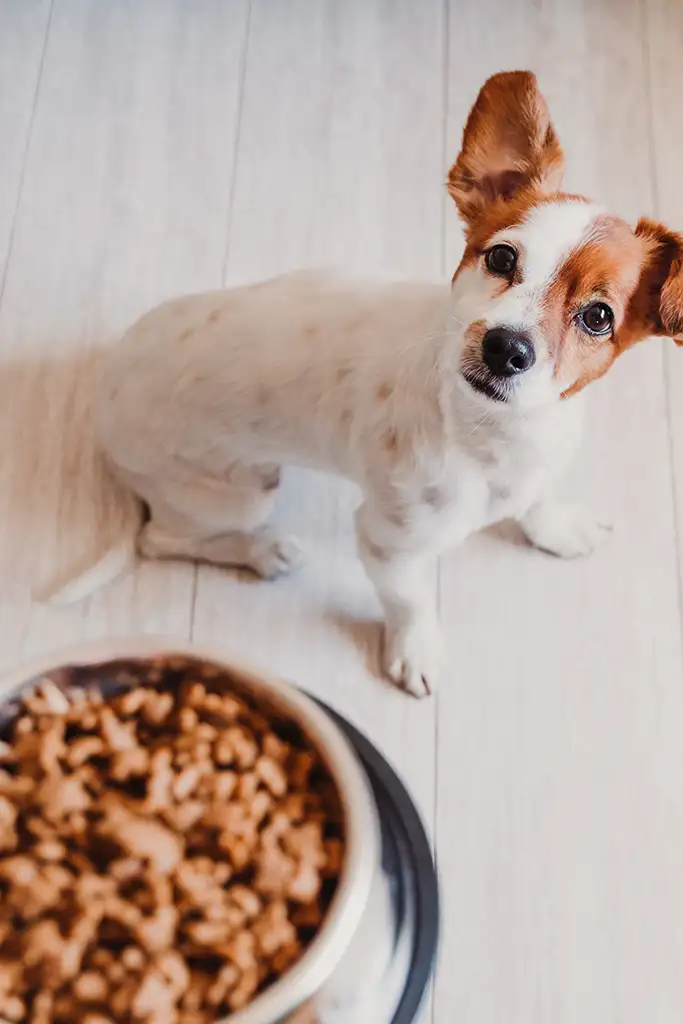The German Aussie : What To Know About This German Shepherd Australian Shepherd Mix
Quick Guide
- The German Shepherd Australian Shepherd Mix
- German Shepherd | Parent Profile Of The German Australian Shepherd
- Australian Shepherd | Parent Profile Of The German Australian Shepherd
- Is the German Shepherd and Australian Shepherd Mix Right for You?
- Before You Buy a German Australian Shepherd Puppy….
- Do You Have a German Australian Shepherd Mix?
Meet the German Australian Shepherd: A cross between a German Shepherd and an Australian Shepherd. This extremely hardworking and intelligent breed which is an excellent choice for some, but a disaster for others.
If you are thinking about adopting or buying a German Aussie puppy, you came to the right place to learn more about what to expect before jumping in. This is definitely not the right choice for everyone.
This article is meant to be your go to comprehensive guide to this hybrid! Read on to find out:
- What you can expect from this hybrid breed
- Detailed information about each parent breed
- Tips for deciding if this is a good choice for your next pet
- Pointers for finding German Australian Shepherd puppies
The German Shepherd Australian Shepherd Mix
German Aussie Pictures
German Australian Shepherd Temperament
German and Australian Shepherds share quite a few personality traits in terms of general breed characteristics. Both are extremely intelligent, alert (sometimes to the point of hypervigilance), keen, and athletic. Both are also hardworking and readily take to modern training techniques along with strong and consistent leadership.
Australian and German Shepherd crosses also tend to have an adventurous and playful spirit. They thrive when properly mentally stimulated and challenged regularly. If they get bored, their first tactic will be to engage you in a game or try to make you laugh with inventive antics. With so much personality, you can expect plenty of good times really connecting with such a loyal and loving companion.
However, there are a few potential downsides to both breeds as well. They can become destructive and neurotic if frequently left alone for extended periods. They have a tendency towards dog/dog aggression if not socialized at an early age. Both can be territorial and possessive with their close family which can lead to aggression or suspicion of new people if not addressed early by knowledgeable owners.
However, provided you are an experienced dog owner with plenty of room in your life for an active lifestyle that includes your trusty, loyal companion, then the outlook is very good for this hybrid breed.
Size
Although Aussies tend to come in a fairly consistent size range between 40-65 pounds, falling solidly in the “medium” size of canines, the same cannot be said for German Shepherds (GSDs). They have a wide range of sizing since many people breed these dogs to be much larger than the breed standard calls for.
In order to gauge the likely adult size of your German Australian Shepherd puppy, your best bet is to meet the parents and average between the two.
If you are looking for a very rough estimate range, then expect between 55-95 pounds when fully grown. This is no lap dog!
Coat and Appearance
Just about any color combination with this mix is possible. However, perhaps the most striking is a canine with GSD bone structure and build with the famous Aussie merle coat color. Truly a striking combination, it is one of the reasons this is such a popular hybrid. In some cases, merle dogs also have bright blue or marbled eyes, adding even more flash to an otherwise handsome dog.
You can expect that there will be a major molt every spring, with a smaller molt in the fall, when your German Aussie sheds her undercoat. Other than those times of year, expect to brush through her coat weekly to keep shedding in the house within acceptable ranges.
Health and Life Expectancy
Hip and elbow dysplasia are concerns in both parent breeds. It is advisable to buy from breeders that have good records that include screening for both of these conditions. Otherwise, mixing these purebreds does lower the risk for the congenital problems associated with each breed, covered in more detail below.
This is overall a healthy hybrid. The adult size of each dog is a good indicator of lifespan with smaller examples likely in the longer 15-year range, larger dogs likely to be in the 11-year range.
For more German Shepherd & Australian Shepherd Mixes check out these articles:
- Australian Shepherd & Husky Mix
- Corgi & German Shepherd Mix
- Blue Heeler & Australian Shepherd Mix
- Australian Shepherd & Border Collie Mix
- Golden Retriever & German Shepherd Mix
- Blue Heeler & German Shepherd Mix
German Shepherd | Parent Profile Of The German Australian Shepherd
History
In the 1800’s in the hills of northwest Europe, sheep herding was a common vocation spread throughout various tightknit rural agricultural communities. These shepherds were aided by their trusty dogs which were selectively bred for their working abilities – both herding and guarding the precious flocks.
Qualities such as intelligence, loyalty, speed, endurance and a strong sense of smell were all considered critical to their ability to work.
By the late 1850’s there was a drive across Europe towards the standardization of dog breeds. In terms of the German Shepherd, it was the German ex-cavalry captain and former veterinary student Max von Stephanitz who would be the champion of this famous dog breed.
His initial sire was a particularly strong, intelligent, loyal and hard-working specimen of the herding dogs found throughout Germany. He named Horand von Grafrath the first German Shepherd Dog after deciding that he embodied all of the characteristics of the perfect herding dog.
Through further selective breeding, including a fair bit of in-breeding which was common for the time, (along with rumors that wolf stock was cross bred in) the German Shepherd Dog, under Von Stephanitz’ leadership, was developed for his working abilities.
Despite originally being breed as a herding dog, the GSD soon moved into military and police work. Thanks to their strong sense of loyalty, unmatched devotion to the job, and well-developed sense of smell, GSDs remain popular choices for search and rescue as well as drug and explosive detection.
In the many years since, some breeders have strayed significantly from the standards first articulated for this breed, evident by some pure-bred confirmation title holders with extremely sloped backs.
A matter of controversy both within the community of lovers of the breed as well as animal welfare advocates, the German Shepherd breed standard is currently undergoing significant pressure to return to the original vision of its founder.
Temperament
One of the things to keep in mind when it comes to the temperament of any dog is that there is always a range of behavior and personality in each breed. The selective breeding in the lineage of any breed of dog will have a big impact on the final temperament of each individual. However, the environment and training a dog receives over the course of their lifetime is also a major factor in their overall personality.
That being said, when responsibly bred, the temperament standard for GSDs is confident, brave, focused, eager to please yet somewhat aloof with strangers. They are quite intelligent and very easy to train as long as they are provided with consistent expectations, reward for a job well done, and proper leadership in the home.
In addition, German Shepherd puppies must be actively socialized with other dogs, people and places in order to grow up with the confidence they need to be balanced dogs. Although they do have a reputation as one of the more aggressive breeds, when adjusted for their popularity, this is simply not the case.
Pro Tip: Invest in a harness for German Shepherds that will aid in training and control.
Size
The GSD is a large dog with an imposing and regal look about her. Although the breed standard puts this canine between 24-26”/65-95 pounds for males, and 22-24”/50-70 pounds for females, the truth is that there are many breeders that aim towards larger, heavier dogs that are closer to the original breed vision. GSD’s that are in excess of 120 pounds are not uncommon.
Coat and Appearance
The GSD is a rather notorious shedder, making him inappropriate for those that can’t tolerate a little bit of dog hair embedded into every surface of their home. Lovers of the breed have simply accepted this fact as part of loving a GSD.
They are a double coated breed with a soft downy layer under a coarser outer layer of fur. In the spring the undercoat the GSD developed over the winter will shed completely, often over the course of a very messy two weeks. During that time, daily outdoor brushing will be required.
A smaller but still substantial molt will happen in the fall. Other than that, a weekly brushing outdoors will keep the worst of the shedding out of the house.
The most popular colors for GSDs include the famous black and tan as well as solid black. Although not considered permissible according to the breed standard, pure white examples are uncommon but do occur.
Health and Life Expectancy
For their size, German Shepherds have a relatively short lifespan ranging on average from 7-10 years. They are subject to a fair number of congenital diseases including hip and elbow dysplasia as well as degenerative spinal stenosis which are too common in the breed.
Degenerative myelopathy which is a neurological disease, is likely carried in the breed thanks to inbreeding of the original stock, however, modern DNA testing makes screening for this congenital defect fairly easy and cheap, thus it is being eliminated by responsible breeders.
Rarer, yet serious, conditions include a blood disorder known as Von Willebrand disease and a pancreatic condition known as exocrine pancreatic insufficiency (EPI).
Pros/Cons
PROS
- Easy to train if you have experience and provide good leadership
- Confident and up for any adventure
- Loyal to a fault with the family
- Excellent work ethic for helping on the farm, ranch, dog sports, and canine occupations
- Very popular breed with no shortage of responsible breeders to be found
- Excellent companion on the trail for those that love outdoor adventure
- Calm and reassuring demeanor
CONS
- Does NOT do well if left alone or unstimulated for long periods of time
- Excessive and compulsive loud barking is common when GSDs are neglected or bored
- Can be too protective and prone to aggression with strangers if not properly socialized
- Excessive shedding during the spring and fall molt of the undercoat
- Significant exercise requirements – not a great candidate as a couch potato
Australian Shepherd | Parent Profile Of The German Australian Shepherd
History
The predecessors of this beloved herding breed were the dogs used to heard sheep in the Pyrenees Mountains in a region known as Basque. These canines were selectively bred by shepherds over hundreds of generations to build a dog that was smart, alert, and skilled. They also needed intense endurance to work long hours over arduous terrain in a wide range of climates.
In search of better herding grounds, many people from the Basque region pushed eastward in the 1800’s. Some settled in Australia where they interbred their dogs with other collies and Border Collies that were popular in the region and particularly well adapted to terrain and climate there.
After a time, some went on to settle along the west coast of America, bringing their dogs with them. They quickly became popular among cattle and sheep ranchers, where they have remained a favorite to this day. Of course, Americans also further shaped the breed we know today as the Australian Shepherd.
Because they are so athletic and intelligent, the Aussie is a favorite among those that participate in competitive dog sports, such as agility, herding trials and flyball. In addition, you will find this breed working alongside people in occupations such as search and rescue, drug and bomb detection, and various service and therapy dog roles.
Temperament
There are few dog breeds with more get-up-and-go than the Australian Shepherd. This is a hyperactive breed suitable only for families that are active and can provide plenty of opportunities for regular off leash play such as fetch or dog sports (where Aussies excel).
Aussies require daily mental and physical stimulation or they are quite likely to become neurotic and destructive. This is just not a breed that can tolerate long days alone without some company, or better yet, a job. (Yes, fetch is totally a job!)
Luckily, one of the smartest dogs out there, you can expect an eager and fast learner that responds extremely well to positive reinforcement techniques such as clicker training. They will also naturally herd anything that will lend itself, including small children!
Aussies also need early and regular socialization, particularly with other dogs, as they do have slightly high dog/dog aggression compared to some other breeds.
Size
The Aussie is a medium sized dog built for endurance, speed, and agility. The females range from 18-21”/40-55 pounds, while the males reach 20-23”/50-65 pounds in terms of the AKC standard. There is also a miniature version of the Aussie, coming in between 13-18”.
Coat and Appearance
This is a double coated breed with a medium length topcoat that is usually silky and tends to be feathered around the legs and the chest. Although some are born with naturally bobbed tails, most have been docked. If allowed to grow, they usually have a long tail what is covered in a feathery, silky fur.
Color variations in the Aussie are quite varied. They may come in solid colors including black, red, liver, and tan. However, it is perhaps the red or blue merles that draw the eye the most, with beautiful patches of speckled, dark and light colorations.
This striking color pattern also happens to be associated marbling in the eyes. Given that the colors can range from a light amber, bright blue, to dark brown, the eyes of the Aussie are one of their most striking features.
Pro Tip: Invest in a solid grooming brush suited for Aussie Shepherds.
Health and Life Expectancy
This is a relatively healthy breed with a life expectancy from 12-15 years. Keeping an Australian Shepherd in good shape does require that they get plenty of exercise and a high-quality dog food since obesity is common if this dog is allowed to over indulge.
Vision and hearing problems are relatively common among canines that carry the merle coloration gene, including the Aussie. This is especially true when two merles are bred together. More white coloration in the face is associated with higher risks as well. Otherwise, this tends to be a healthy breed.
Pros/Cons
PROS
- Extremely smart, eager to please, and easy to train
- Excellent companions for folks that are active or interested in competitive dog sports
- Well suited for ranch life and handling large and small livestock
- Not inclined to bark unless there is a perceived threat, or just for fun during a game
- Playful personality with plenty of energy for folks that enjoy high strung go-getter types
- Fairly low maintenance in terms of grooming
- Popular enough that finding a responsible breeder is not a problem
CONS
- Exercise and training requirements are high
- Can be pushy with small children and other pets
- Must be socialized early since dog/dog aggression can be an issue
- Will become neurotic and likely destructive if left alone often for extended periods
- Not suitable for apartment living unless you are able to provide 2-3 hours a day of off-leash vigorous exercise
Is the German Shepherd and Australian Shepherd Mix Right for You?
Although beautiful and intelligent, the Australian Shepherd and German Shepherd mix is definitely not a good choice for most people. It takes a special family to give this canine everything he needs to grow up happy, healthy and balanced.
A German Australian Shepherd might be right for you if:
- You are a rancher or farmer looking for a trusty working companion capable of working with large and small livestock
- You play competitive dog sports and want an athletic and biddable canine
- You own or have easy access to large tracks of land to play frisbee, fetch or long runs off leash
- You have an active family that enjoys regular outdoor excursions
- You can provide plenty of positive reinforcement training and consistent leadership
A German Aussie is probably NOT the right dog for you if:
- You work long hours and expect your dog to be okay with waiting for you at home
- You live in an apartment and/or lack access to open spaces where your dog can burn off excess energy
- You are new to dog ownership and are looking for a low maintenance dog
- You have very small children at home and are not able to provide constant supervision
- You lack any experience with dog training
Before You Buy a German Australian Shepherd Puppy….
We hope this article has given you all the information you need to decide if a German Shepherd and Australian Shepherd mix puppy is the right choice for your next canine companion. However, we wanted to leave you with a final thought on where to find German Shepherd Australian Shepherd puppies. Here are some tips:
Be wary of buying puppies online
There are many internet scams out there that are selling puppies of all breeds, but designer breeds seem to be a special favorite for folks that may try to get your money in advance, when they don’t even have a puppy for sale. Or, they may have a puppy that meets the breed requirement you are looking for but practice unethical and abusive puppy mill breeding. Either way, you don’t want any part of that!
Check out adoption first
Both of the parent breeds have well established rescue groups full of volunteers that get these breeds out of kill shelters and into foster homes until their forever home can be found. Most breed organizations also rescue mixes, so check out both German Shepherd and Australian Shepherd rescue groups in your state.
In addition, there are websites such as Petfinder that work with trusted organizations that have puppies and dogs that are up for adoption. You can search by breed, age, sex and geographical area, making it pretty easy to find eligible candidates of the breed type you want without supporting a puppy mill or getting scammed.
Seek out responsible breeders
If you have exhausted the adoption opportunities in your area and are sure that this is the right designer dog for your needs and lifestyle, then be sure to buy from a responsible breeder. Here is a quick checklist so that you can make sure you are on the right track:
- They invite you to tour their home and/or kennel to see that conditions for parents and puppies are clean, safe, and spacious.
- They offer to share detailed health records of the parents plus all veterinary records and/or genetic testing of their puppies.
- They ask you questions about your knowledge of dog training, if you can provide for the puppy’s wellbeing, and your financial stability to make sure that you are going to give their puppy a safe and supportive forever home.
- They are associated with one or more official breed organizations, organized dog sports, or are involved with dog assisted therapy. This kind of “extracurricular” shows a true interest in the welfare of their dogs beyond just breeding what is popular to turn a quick buck.
Do You Have a German Australian Shepherd Mix?
We love to hear from our readers! If you have a fun story you would like to share about your fuzzy friend, whether they are a German Shepherd Australian Shepherd Mix, or cross of either breed, be sure to share it in the comments section below!















